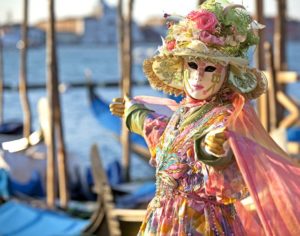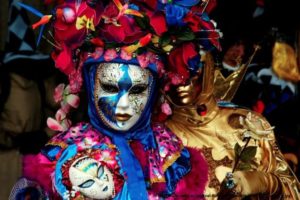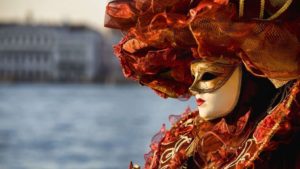Impostazioni Privacy
Scegli quali cookie vuoi autorizzare.
Puoi cambiare queste impostazioni in qualsiasi momento. Tuttavia, questo potrebbe risultare alla susseguente non-disponibilità di alcune funzioni. Per informazioni sull’eliminazione dei cookie, consulta la funzione aiuto del tuo browser.
Ulteriori informazioni sui cookie che utilizziamo.
Con lo slider, puoi abilitare o disabilitare vari tipi di cookie:
Questo sito farà:
- Essenziale: ricorda l'impostazione dei permessi dei cookie
- Essenziale: consentire i cookie di sessione
- Essenziale: raccogli informazioni che inserisci in moduli di contatto, newsletter e altri moduli in tutte le pagine
- Essenziale: tieni traccia di ciò che hai inserito in un carrello della spesa
- Essenziale: autenticare che si è connessi al proprio account utente
- Essenziale: ricorda la versione della lingua selezionata
Questo sito Web non:
- Ricorda i tuoi dati di accesso
- Funzionalità: ricorda le impostazioni dei social media
- Funzionalità: ricorda regione e paese selezionati
- Analytics: tieni traccia delle pagine visitate e delle interazioni intraprese
- Analytics: tieni traccia della tua posizione e regione in base al tuo numero IP
- Analytics: tieni traccia del tempo trascorso su ogni pagina
- Analytics: aumentare la qualità dei dati delle funzioni statistiche
- Pubblicità: adattare le informazioni e la pubblicità ai tuoi interessi in base ad es. il contenuto che hai visitato prima. (Al momento non utilizziamo i cookie di targeting o targeting .
- Pubblicità: raccogliere informazioni personali identificabili come nome e posizione
Questo sito farà:
- Essenziale: ricorda l'impostazione dei permessi dei cookie
- Essenziale: consentire i cookie di sessione
- Essenziale: raccogli informazioni che inserisci in moduli di contatto, newsletter e altri moduli in tutte le pagine
- Essenziale: tieni traccia di ciò che hai inserito in un carrello della spesa
- Essenziale: autenticare che si è connessi al proprio account utente
- Essenziale: ricorda la versione della lingua selezionata
- Funzionalità: ricorda le impostazioni dei social media
- Funzionalità: ricorda regione e paese selezionati
Questo sito Web non:
- Ricorda i tuoi dati di accesso
- Analytics: tieni traccia delle pagine visitate e delle interazioni intraprese
- Analytics: tieni traccia della tua posizione e regione in base al tuo numero IP
- Analytics: tieni traccia del tempo trascorso su ogni pagina
- Analytics: aumentare la qualità dei dati delle funzioni statistiche
- Pubblicità: adattare le informazioni e la pubblicità ai tuoi interessi in base ad es. il contenuto che hai visitato prima. (Al momento non utilizziamo i cookie di targeting o targeting .
- Pubblicità: raccogliere informazioni personali identificabili come nome e posizione
Questo sito farà:
- Essenziale: ricorda l'impostazione dei permessi dei cookie
- Essenziale: consentire i cookie di sessione
- Essenziale: raccogli informazioni che inserisci in moduli di contatto, newsletter e altri moduli in tutte le pagine
- Essenziale: tieni traccia di ciò che hai inserito in un carrello della spesa
- Essenziale: autenticare che si è connessi al proprio account utente
- Essenziale: ricorda la versione della lingua selezionata
- Funzionalità: Ricorda impostazioni di social media Funzionalità: Ricorda regione e paese selezionati
- Analytics: tieni traccia delle pagine visitate e delle interazioni intraprese
- Analytics: tieni traccia della tua posizione e regione in base al tuo numero IP
- Analytics: tieni traccia del tempo trascorso su ogni pagina
- Analytics: aumentare la qualità dei dati delle funzioni statistiche
Questo sito Web non:
- Ricorda i tuoi dati di accesso
- Pubblicità: utilizzare le informazioni per la pubblicità su misura con terze parti
- Pubblicità: consente di connettersi ai siti sociali
- Pubblicità: identifica il dispositivo che stai utilizzando
- Pubblicità: raccogliere informazioni personali identificabili come nome e posizione
Questo sito farà:
- Essenziale: ricorda l'impostazione dei permessi dei cookie
- Essenziale: consentire i cookie di sessione
- Essenziale: raccogli informazioni che inserisci in moduli di contatto, newsletter e altri moduli in tutte le pagine
- Essenziale: tieni traccia di ciò che hai inserito in un carrello della spesa
- Essenziale: autenticare che si è connessi al proprio account utente
- Essenziale: ricorda la versione della lingua selezionata
- Funzionalità: Ricorda impostazioni di social media Funzionalità: Ricorda regione e paese selezionati
- Analytics: tieni traccia delle pagine visitate e delle interazioni intraprese
- Analytics: tieni traccia della tua posizione e regione in base al tuo numero IP
- Analytics: tieni traccia del tempo trascorso su ogni pagina
- Analytics: aumentare la qualità dei dati delle funzioni statistiche
- Pubblicità: utilizzare le informazioni per la pubblicità su misura con terze parti
- Pubblicità: ti consente di collegarti ai siti social. Pubblicità: identifica il dispositivo che stai utilizzando
- Pubblicità: raccogliere informazioni personali identificabili come nome e posizione
Questo sito Web non:
- Ricorda i tuoi dati di accesso
 February in Italy means that just about every city on the Peninsula is invaded with masks, confetti, colors and lights that make for a very exciting and unique atmosphere: it’s Carnival! It is a party with ancient roots, and today has become a folkloristic rite in which traditions and fun work together to bring enormous life to this unique celebration.
February in Italy means that just about every city on the Peninsula is invaded with masks, confetti, colors and lights that make for a very exciting and unique atmosphere: it’s Carnival! It is a party with ancient roots, and today has become a folkloristic rite in which traditions and fun work together to bring enormous life to this unique celebration. Of course the protagonist of Carnival is the costume or disguise, the mask that allows those who don it to transform themselves into whomever they wish to be – at least for a few days. The origins of Carnival date back to the Roman Saturnalia festival that rang in the new year (Julian calendar) – similarly to the Lupercalia and Dionysian feasts. The actual term “carnevale” however derives from the Latin “carnem levare” for “take away the meat”: indeed, in Antiquity the term indicated the banquet held the last day before the period of abstinence from meat, i.e. the Christian Lent. Carnival, according to the Roman Catholic Liturgical Calendar, is set for between Epiphany (January 6th) and the start of Lent.
Of course the protagonist of Carnival is the costume or disguise, the mask that allows those who don it to transform themselves into whomever they wish to be – at least for a few days. The origins of Carnival date back to the Roman Saturnalia festival that rang in the new year (Julian calendar) – similarly to the Lupercalia and Dionysian feasts. The actual term “carnevale” however derives from the Latin “carnem levare” for “take away the meat”: indeed, in Antiquity the term indicated the banquet held the last day before the period of abstinence from meat, i.e. the Christian Lent. Carnival, according to the Roman Catholic Liturgical Calendar, is set for between Epiphany (January 6th) and the start of Lent. Initially a feast characterized by unrestrained enjoyment of food, drink and sensual pleasures, and granted as a temporary escape for the lower classes – an opportunity to upend and subvert norms, especially in the way of social order – through the arc of time Carnival spread throughout the world and took on ever-novel shades and nuances, mutating into a singular form of entertainment and merrymaking. From north to south, Italy marks Carnival with long standing traditions that are internationally-known, and that attract thousands of visitors from around the world this time every year.
Initially a feast characterized by unrestrained enjoyment of food, drink and sensual pleasures, and granted as a temporary escape for the lower classes – an opportunity to upend and subvert norms, especially in the way of social order – through the arc of time Carnival spread throughout the world and took on ever-novel shades and nuances, mutating into a singular form of entertainment and merrymaking. From north to south, Italy marks Carnival with long standing traditions that are internationally-known, and that attract thousands of visitors from around the world this time every year.

